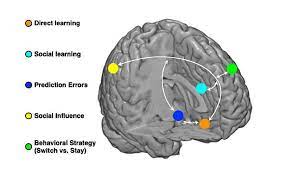The Importance of Decision Criteria in Making Informed Choices
When faced with important decisions, having clear decision criteria is crucial in making informed choices. Decision criteria are the standards or rules that you use to evaluate options and determine the best course of action. By establishing decision criteria, you can ensure that your choices align with your goals, values, and priorities.
One key benefit of using decision criteria is that it helps you prioritize what matters most to you. By identifying the factors that are most important in a decision, you can focus on those aspects and make choices that are in line with your objectives. This can lead to more effective and efficient decision-making processes.
Decision criteria also provide a framework for evaluating options objectively. Instead of relying solely on emotions or intuition, having clear criteria allows you to assess each option based on specific factors. This can help reduce bias and ensure that decisions are based on rational analysis rather than subjective feelings.
Furthermore, decision criteria help you weigh the pros and cons of different options more effectively. By considering how each option aligns with your established criteria, you can compare them side by side and determine which choice offers the best overall outcome. This systematic approach can lead to better decision outcomes and increase your confidence in the choices you make.
In conclusion, decision criteria play a vital role in guiding your decision-making process and ensuring that you make informed choices that align with your goals and values. By establishing clear standards for evaluating options, you can prioritize what matters most to you, assess choices objectively, and compare options more effectively. Incorporating decision criteria into your decision-making process can lead to better outcomes and empower you to make decisions with confidence.
5 Essential Tips for Establishing Effective Decision Criteria
- Clearly define your decision criteria before evaluating options.
- Consider both quantitative and qualitative factors when setting criteria.
- Rank your decision criteria in order of importance to prioritize them effectively.
- Regularly review and update your decision criteria to ensure they remain relevant.
- Seek input from relevant stakeholders to gather diverse perspectives on the decision criteria.
Clearly define your decision criteria before evaluating options.
When making decisions, it is essential to clearly define your decision criteria before evaluating options. By establishing specific standards or rules that you will use to assess choices, you can ensure that your decision-making process is guided by objective criteria rather than subjective factors. Clearly defining your decision criteria upfront helps you focus on what truly matters to you and provides a framework for evaluating options effectively. This approach can lead to more informed decisions that align with your goals and priorities.
Consider both quantitative and qualitative factors when setting criteria.
When setting decision criteria, it is important to consider both quantitative and qualitative factors. Quantitative factors involve measurable data or numerical values, such as costs, timeframes, or performance metrics. On the other hand, qualitative factors are more subjective and can include aspects like customer satisfaction, brand reputation, or cultural fit. By incorporating both types of factors into your decision criteria, you can ensure a more comprehensive evaluation of options and make well-rounded decisions that take into account both tangible and intangible aspects of the choice at hand.
Rank your decision criteria in order of importance to prioritize them effectively.
To prioritize your decision criteria effectively, it is essential to rank them in order of importance. By assigning a level of significance to each criterion, you can focus on what matters most and make informed choices that align with your goals and values. Ranking your decision criteria allows you to allocate resources and attention accordingly, ensuring that the most critical factors are given the highest consideration during the decision-making process. This approach helps streamline your decision-making process, leading to more efficient and effective outcomes that reflect your priorities and objectives.
Regularly review and update your decision criteria to ensure they remain relevant.
Regularly reviewing and updating your decision criteria is essential to ensure that they remain relevant and aligned with your current goals and priorities. As circumstances change and new information becomes available, it is important to reassess your criteria to reflect any shifts in your values or objectives. By staying proactive in evaluating and adjusting your decision criteria, you can make sure that your decision-making process remains effective and that you are consistently making choices that best serve your needs and aspirations.
Seek input from relevant stakeholders to gather diverse perspectives on the decision criteria.
Seeking input from relevant stakeholders is a valuable tip when establishing decision criteria. By gathering diverse perspectives from individuals who are directly impacted by the decision, you can gain valuable insights and considerations that you may not have thought of on your own. This collaborative approach not only helps to ensure that all relevant factors are taken into account but also fosters a sense of inclusivity and transparency in the decision-making process. Ultimately, seeking input from stakeholders can lead to more well-rounded and informed decision criteria that reflect a broader range of perspectives and considerations.



